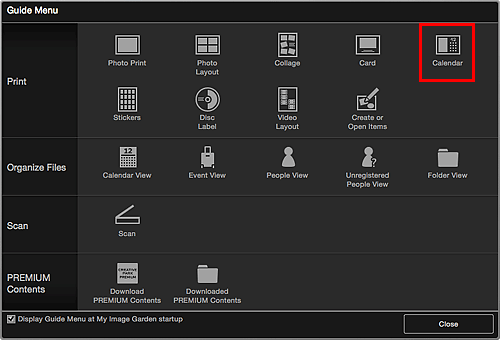


If you are in Diagnostic mode the Diagnostic sheet will print. To be sure you are in the service mode before continuing press RESUME once - the light will turn Orange. Press RESUME again so the light turns green. You will notice the power light turn orange. While still holding POWER press RESUME once. Wait about 5 seconds before releasing RESUME but continuing to hold POWER. Hold down RESUME (Triangle pointed down) then push and hold down POWER. Turn off the printer but don't unplug it. Instructions for most other compatible printers can be found herehere. These instructions are for Pixma IP3000/4000/5000.

Trust me, this looks way harder than it really is. Now we need to change the printer's BIOS to non-US (ie.
CANON IMAGE GARDEN THING DRIVER
A flat head screw driver About 5 minutes of time (10 minutes if you read all my dumb comments). You can tell because there is a fold down plate on the front of the printer (image 0B). What you'll need: A Canon Pixma Printer that has the ability to print on disks. Where applicable I will tell you where the models differ. Although all of my testing is done on my Canon Pixma IP5000 this tutorial applies to several Canon printers with CD/DVD printing abilities. The original StevesForums post is now 77+ pages, so weeding through it to find what works and what doesn't work could possibly take 4-5 years. The reason I have this tutorial is to give what I have learned in a straight-forward how-to. Credit: The initial idea was found on StevesForums. Or you could buy one on ebay for about $20.
CANON IMAGE GARDEN THING HOW TO
This tutorial describes how to make a cd tray for little or no money. Oh yeah, and obtain the Disk tray that obviously didn't come standard to us, as they did in Europe. Notice I said "disabled." Because the printers still have the feature all we need to do is enable it. European models have this feature already enabled but unfortunately for us Americans it has been disabled due to Canon not wanting to pay for the licensing to use the technology in North America.
CANON IMAGE GARDEN THING ISO

However, for the best blur effect, consider buying a lens with a large aperture (smaller f-values), often sold as low-light or fast lenses. You can achieve blurred backgrounds by zooming in and keeping your subject close to you but far away from the background. Kit lenses that are sold with most consumer-grade DSLR cameras have small apertures (f4 to f8). Cameras with larger sensors can achieve longer focal lengths and subsequently better background blur.


 0 kommentar(er)
0 kommentar(er)
